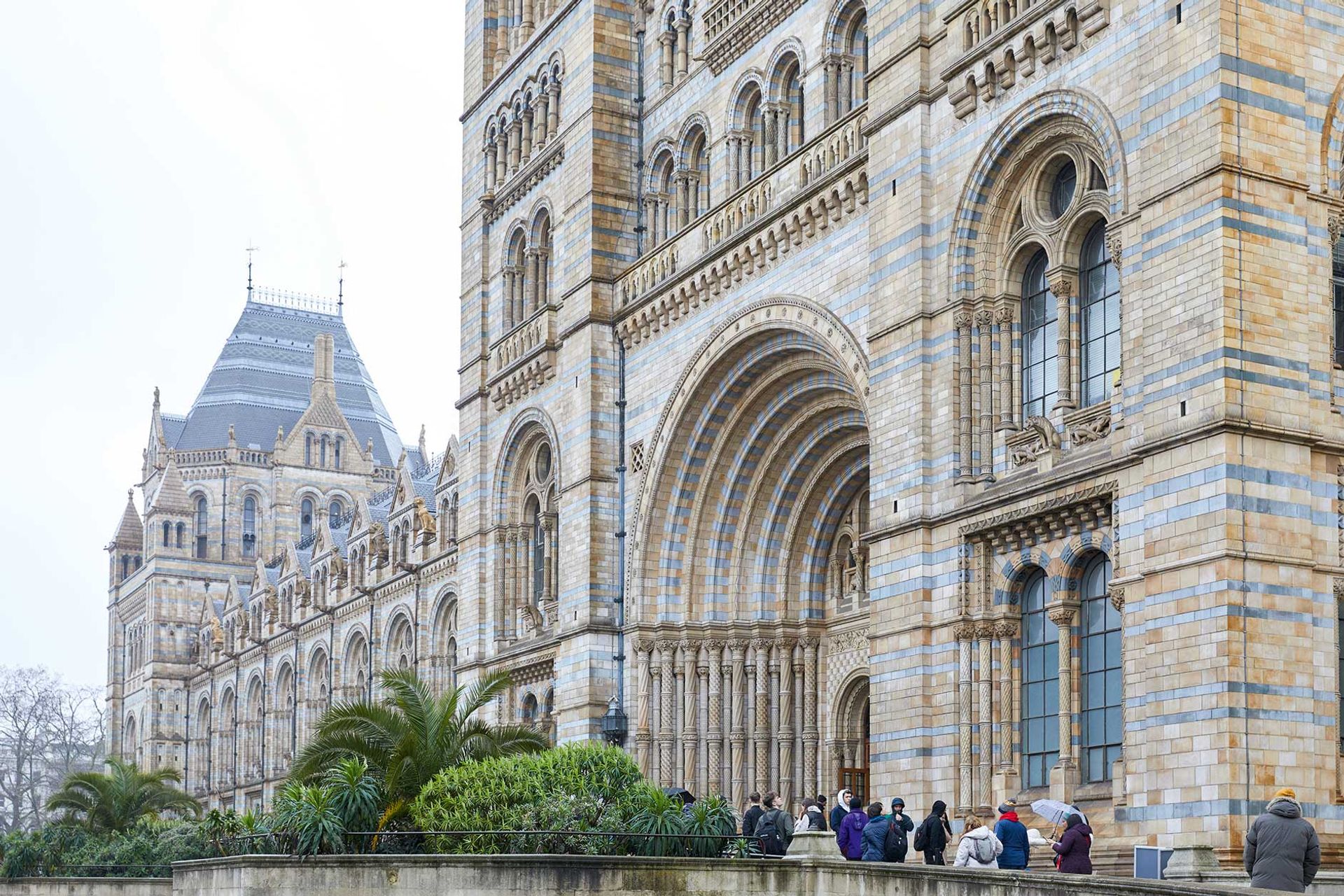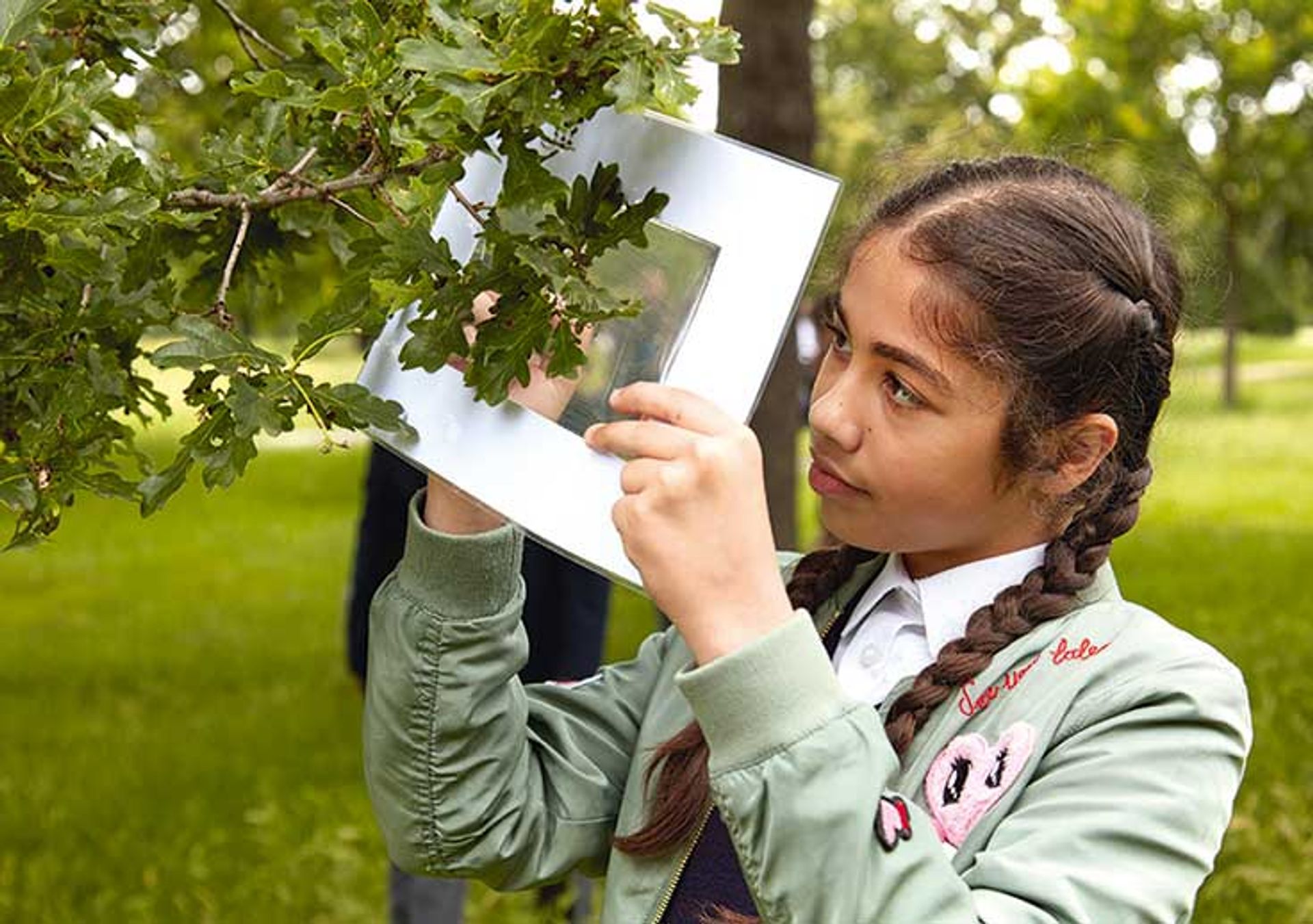• Find out more about the museums shortlisted for the Art Fund Museum of the Year 2023 here
Dinosaurs are the “number one draw” of the Natural History Museum (NHM), says its director, Doug Gurr. For nearly four decades, London’s main museum space, Hintze Hall, has been dominated by Dippy, a life-size plaster cast of a diplodocus skeleton (succeeded, in 2017, by a blue whale skeleton named Hope ). But despite our collective fascination with Dippy and his ilk, “if someone describes you as a dinosaur, that doesn’t quite mix, does it?” Gurr points out.
The term also implies a “failed species” that went extinct. And yet, dinosaurs ruled the Earth for more than 170 million years before a deadly asteroid impact wiped them out. However, Homo sapiens evolved just 300,000 years ago — a jolt in the planet’s 4.5 billion years of existence — and we’re “potentially headed for a sixth mass extinction” of our own making, Gurr says. That is to say: a catastrophe similar to the five mass extinctions of the last 500 million years, when at least 75% of the species on Earth disappeared.
Before humanity follows the path of the dinosaurs, the NHM is on a mission to steer us away from the collision course. In January 2020, the museum declared a “planetary emergency” and launched an 11-year strategy to “create defenders of the planet”. This galvanizing idea is what, according to Gurr, inspired him to apply for directorship later that year from the unusual path of director of Amazon UK. And that’s what he now hopes to inspire the Art Fund judges to crown the 2023 NHM Museum of the Year.
“Perhaps we should be a little more careful with this planet; it’s not as stable as you think”
Doug Gurr, director of the NHM
It was a “radical”, even “courageous” move, he says, for a museum that had operated as a “passive cataloger” of the natural world from its Victorian origins to reinventing itself as “an active catalyst for change”. Although Gurr insists that the NHM is “not a campaign organization”, it can play an important public role as the trusted scientific authority on the climate crisis and the lesser-known biodiversity crisis, but probably just as serious.
“We have a science that actually produces the solutions,” he says. “Quite unusual for a research institute, we also have this extraordinary public communication channel: physical visitors, digital dissemination. We know that trust in institutions globally has declined very rapidly, but museums as a whole have resisted.
Perhaps unsurprisingly for a former executive of one of the world’s biggest retailers, Gurr wants NHM’s advocacy to go far beyond the museum’s physical footprint in South Kensington and capture a global audience. “The challenges are global,” he says. “It’s not going to be very effective if you convince ten people passionately to love the planet: it must be on the scale of hundreds of millions.”
So digital content and events, a lifeline for many museums during closures, remain a key way for the NHM to maintain “an ongoing dialogue with the public”, even as its number of physical visitors has climbed back to 4. .6 million in 2022. (That’s more than any other indoor museum in the UK last year, according to the Association of Leading Visitor Attractions.)
The museum has also redesigned all of its multiple programs under three “always on” environmental themes. Still in full swing in its 58th edition, the Wildlife Photographer of the Year competition is stirring hearts and minds with “frontline reporting on the climate and biodiversity crisis,” says Gurr.
In 2021, the NHM implemented Our Broken Planet: How We Got Here and How to Fix It, a 15-month series of free exhibits and digital initiatives that Gurr said “gave people choices” to live sustainably without being “predatory.” For the exhibit, scientists have chosen specimens from the museum’s 80 million-strong collection as talking points about the food we eat, the products we buy and the energy we use. More than 75% of the 1.2 million visitors said the show made them more likely to take environmental action in the future.

© Janie Airey, Art Fund 2023
The five-acre lot, meanwhile, will house the Urban Nature project. A garden redevelopment, costing over £20million, sponsored by Amazon Web Services, the National Lottery Heritage Fund and others, is due to open next spring. To the west, the expanded Wildlife Garden will be a hub for hands-on learning and citizen science, with activities ranging from pond dipping to acoustic monitoring. To the east, a “Walk in Deep Time” will take visitors through rocks, mosses, ferns, trees, and even a weatherproof Dippy en route to the museum entrance.
“Deep time: It’s humbling to start thinking about it,” Gurr says. “We tend to see [the world] as it is today. But it’s very fragile and we’re trying to help people understand… Maybe we should be a little more careful with this planet, because it’s not as stable as we think.
But Gurr sees the NHM’s message as hopeful, rather than “catastrophic.” “Our job is to try to nudge people, businesses, ultimately governments” down the “narrow path” between economic growth and protecting the Earth’s resources. “Then we can have a world where people and the planet can thrive.”

A school workshop led as part of the Urban Nature Project
© The administrators of the Natural History Museum
How do you bring your local community into the museum?
Doug Gurr, director of the Natural History Museum: We are in a fairly wealthy area of London. But very close to us are some of the most disadvantaged boroughs in the whole country. Historically, many of these communities have not considered the museum [as being] for them. We focus a team around these hyperlocal communities and make them realize that this is a place for them, especially through the Urban Nature project in the five acres of gardens here. It’s an amazing opportunity to invite people. It will be a beautiful green space in which you can do amazing and interesting science. We want to make sure it’s open to absolutely everyone.
